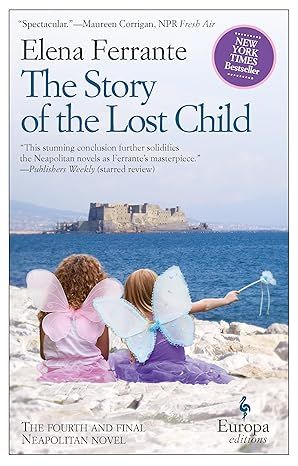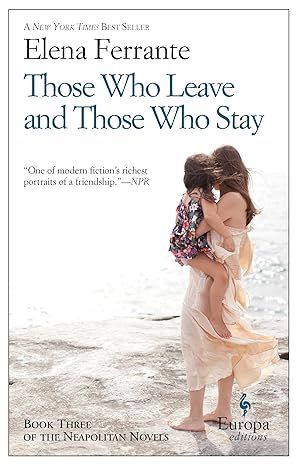My Brilliant Friend
4 out of 5
30,963 global ratings
Named the #1 Book of the 21st Century by the New York Times: The “enduring classic” about the lifelong friendship of two women from Naples (The Atlantic).
Beginning in the 1950s in a poor but vibrant neighborhood on the outskirts of Naples, Elena Ferrante’s four-volume story spans almost sixty years, as its main characters, the fiery and unforgettable Lila and the bookish narrator, Elena, become women, wives, mothers, and leaders, all the while maintaining a complex and at times conflicted friendship. This first novel in the series follows Lila and Elena from their fateful meeting as ten-year-olds through their school years and adolescence.
Through the lives of these two women, Ferrante tells the story of a neighborhood, a city, and a country as it is transformed in ways that, in turn, also transform the relationship between two women.
“An intoxicatingly furious portrait of enmeshed friends.” —Entertainment Weekly
“Spectacular.” —Maureen Corrigan, NPR’s Fresh Air
“Captivating.” —The New Yorker
Basis for the HBO series
331 pages,
Kindle
Audiobook
Hardcover
Paperback
Audio CD
First published March 4, 2020
ISBN 9781787702226
About the authors
Elena Ferrante
Elena Ferrante is the author of seven novels, including four New York Times bestsellers; The Beach at Night, an illustrated book for children; and, Frantumaglia, a collection of letters, literary essays, and interviews. Her fiction has been translated into over forty languages and been shortlisted for the MAN Booker International Prize. In 2016 she was named one of TIME’s most influential people of the year and the New York Times has described her as “one of the great novelists of our time.” Ferrante was born in Naples.
Read more
Reviews
Urenna
5
Truly Enjoyable!
Reviewed in the United States on October 27, 2016
Verified Purchase
The novel involved the lives of Elena Greco (Lenu), and Rafaela Cerullo (Lila). The girls resided in a poverty-stricken area of Naples, Italy, post Second World War, early 1950s. The Black Market was still in existence and some families gained power and status in their neighborhood.
As a patriarchal society, women were sometimes subjected to daily domestic violence. After a chain reaction of violent events that begun in the streets, wives bore the brunt of their husbands’ displaced anger in the home. Parents were often harsh and punitive toward their children in an atmosphere of a scarcity of food, loss of hope and a great level of violence in their community.
Lila and Lenu’s friendship was begun around the age of six. There were no similarities in the girls’ personalities. Lenu, the narrator, knew early on Lila, clever, competitive and stubborn, would be the uncontested leader in social and girlhood activities. Lila appeared bold and adventuresome, rebellious and defiant, whereas Lenu showed timidity and caution.
An outspoken Lila challenged their teacher, Maestra Oliviero, and disrupted the class; unafraid of the consequences. Lila seemed good at suppressing her emotions. But Maestra Oliviero discovered Lila was brilliant. There was nothing Lila couldn’t learn or do. She surpassed all of her classmates, and became Maestra Oliviero’s favorite.
Lenu worked harder to reach Lila’s academic level. Yet Lila always exceeded, leaving Lenu feeling anxious.
By their middle years, Lenu was beset by fears of her mother, whom she disliked, wanting her to quit school. Maestra Oliviero intervened more than once, informing her parents Lenu would have a brighter future if she remained in school.
During adolescence, Lila, probably bored, quit school to work in her father’s shoe repair store. She and her brother, Rino, secretly attempted to build a business designing and making shoes.
Lenu showed absolute alliance and loyalty to her best friend, Lila. She studied harder to prove herself on Lila’s level, welcoming the interest of their instructor, Maestra Oliviera. The girls still competed, with Lila continuing her studies on her own at home, and continuing to override Lenu’s achievements at school.
Lenu spent time in Ischia during her fifteenth year, and became beset with a moral dilemma that she never shared with Lila.
The depth of Lenu’s emotional feelings, especially anxiety are real. I wondered if she would outgrow her feelings of inadequacy concerning Lila.
The reactions of the young men in their circle, Rino, Antonio, and Enzo, are heartfelt, raw, and palpable concerning disrespect toward female family members and friends. Anger often spewed uncontrollably. Their valor appeared intense and unwavering.
Although smart and well-read, Lila, toughened and hardened by the ‘mean streets’ of Naples, grew to be a sophisticated young woman who made an amazing transition.
Indecisive, Lenu wanted to advance and eventually move away. She wanted to gravitate to a better life, away from her violent surroundings, and the anger that permeated her young adult friends, who unlike her, were not educated, and spoke in dialect. She wanted to be around people with like-minded ideas. She knew her desires could only be achieved through education. She was confused about boyfriends, and like most teens, did not have a secure identity, or a positive sense of self.
Ferrante’s writing style is very visual and emotional. I relived some of my own childhood angst concerning physical and emotional changes during puberty, friendships, and competitiveness.
The book refers to ‘spoken in dialect,’ which is the language spoken by those who were uneducated or did not attend secondary school and learn formal Italian.
The word concrete was used a number of times throughout the book, which I think refers to things we know through our senses that are touchable and tangible.
I enjoyed reading My Brilliant Friend. I gave the book five stars.
The novel involved the lives of Elena Greco (Lenu), and Rafaela Cerullo (Lila). The girls resided in a poverty-stricken area of Naples, Italy, post Second World War, early 1950s. The Black Market was still in existence and some families gained power and status in their neighborhood.
As a patriarchal society, women were sometimes subjected to daily domestic violence. After a chain reaction of violent events that begun in the streets, wives bore the brunt of their husbands’ displaced anger in the home. Parents were often harsh and punitive toward their children in an atmosphere of a scarcity of food, loss of hope and a great level of violence in their community.
Lila and Lenu’s friendship was begun around the age of six. There were no similarities in the girls’ personalities. Lenu, the narrator, knew early on Lila, clever, competitive and stubborn, would be the uncontested leader in social and girlhood activities. Lila appeared bold and adventuresome, rebellious and defiant, whereas Lenu showed timidity and caution.
An outspoken Lila challenged their teacher, Maestra Oliviero, and disrupted the class; unafraid of the consequences. Lila seemed good at suppressing her emotions. But Maestra Oliviero discovered Lila was brilliant. There was nothing Lila couldn’t learn or do. She surpassed all of her classmates, and became Maestra Oliviero’s favorite.
Lenu worked harder to reach Lila’s academic level. Yet Lila always exceeded, leaving Lenu feeling anxious.
By their middle years, Lenu was beset by fears of her mother, whom she disliked, wanting her to quit school and get a job or stay home and help out. Maestra Oliviero intervened more than once, informing her parents Lenu would have a brighter future if she remained in school.
During adolescence, Lila, probably bored, quit school to work in her father’s shoe repair store. She and her brother, Rino, secretly attempted to build a business designing and making shoes.
Lenu showed absolute alliance and loyalty to her best friend, Lila. She studied harder to prove herself on Lila’s level, welcoming the interest of their instructor, Maestra Oliviera. The girls still competed, with Lila continuing her studies on her own at home, and continuing to override Lenu’s achievements at school.
Lenu spent time in Ischia during her fifteenth year, and became beset with a moral dilemma that she never shared with Lila.
The depth of Lenu’s emotional feelings, especially anxiety are real. I wondered if she would outgrow her feelings of inadequacy concerning Lila.
The reactions of the young men in their circle, Rino, Antonio, and Enzo, are heartfelt, raw, and palpable concerning disrespect toward female family members and friends. Anger often spewed uncontrollably. Their valor appeared intense and unwavering.
Although smart and well-read, Lila, toughened and hardened by the ‘mean streets’ of Naples, grew to be a sophisticated young woman who made an amazing transition.
Indecisive, Lenu wanted to advance and eventually move away. She wanted to gravitate to a better life, away from her violent surroundings, and the anger that permeated her young adult friends, who unlike her, were not educated, and spoke in dialect. She wanted to be around people with like-minded ideas. She knew her desires could only be achieved through education. She was confused about boyfriends, and like most teens, did not have a secure identity, or a positive sense of self.
Ferrante’s writing style is very visual and emotional. I relived some of my own childhood angst concerning physical and emotional changes during puberty, friendships, and competitiveness.
The book refers to ‘spoken in dialect,’ which is the language spoken by those who were uneducated or did not attend secondary school and learn formal Italian.
The word concrete was used a number of times throughout the book, which I think refers to things we know through our senses that are touchable and tangible.
I enjoyed reading My Brilliant Friend. I gave the book five stars.
Read more
26 people found this helpful

Audrey Schoeman
5
A remarkable novel, on friendship and childhood and so much more
Reviewed in the United States on June 19, 2015
Verified Purchase
Wow. What an amazing book. In short, it’s the story of a childhood friendship between two girls, Elena and Lila, growing up in a poor Neapolitan neighbourhood post WWII. And it really is a remarkable ode to the power and overwhelming intensity of childhood friendships; as narrated by Elena, the relationship with Lila is clearly the defining one in her life. Their precociousness – Lila’s in particular – sets them apart from both their peers and the adults in their impoverished community, where violence is standard and literacy not. In competition with Lila, Elena finds the drive to succeed, but when Lila’s schooling ends with elementary school Elena has to work out how to continue alone, trying to balance her academic success with the neighbourhood world she still inhabits.
The world which Elena and Lila live in is a hard one and Elena tells us that it is ‘a world in which children and adults were often wounded, blood flowed from the wounds, they festered, and sometimes people died […] our world was like that, full of words that killed: croup, typhus, gas, war, lathe, rubble, work, bombardment, bomb, tuberculosis, infection.’ Even as children they are not exempt from the violence all around them; after Lila’s arm is broken by her father the only reflection is that ‘Fathers could do that and other things to impudent girls’.
Within the neighbourhood Lila is in control, a fearless, almost feral child with ‘a gaze that appeared not very childlike and perhaps not even human’ who is determined to overcome her circumstances. The dynamics of the relationship, where Lila leads and Elena follows, are turned on their head the first time they venture outside, when Lila’s nerve gives out while Elena has the revelation that ‘distance – I discovered for the first time – extinguished in me every tie and every worry’. It is through education – at the insistence of her elementary school teacher, Elena is allowed to progress – that the boundaries of this world can be stretched, but for Lila’s father this is an impossibility, and so at ten years old Lila must leave school and begin the life it is expected of her to live.
The passions and uncertainty of childhood are captured brilliantly; the fear and determination, the utter seriousness with which they take the world are all there on the page. As they progress into adolescence and their paths diverge, with Elena continuing through first middle and then high school, there develop new tensions between them. Not only the girls but the whole community is changing, ‘quivering, arching upwards as if to change its characteristics, not to be known by the accumulated hatreds, tensions, ugliness but, rather, to show a new face.’ There is new prosperity to be had – cars, electricity, even, if a girl plays her cards right and marries well, ‘hot water that came from the taps, and a house not rented but owned.’
Negotiating this world is now Lila’s task and adulthood seems suddenly thrust upon her. 14 is not too young to be engaged to a man in his 20s, and Lila turns her precociousness to making the most of the limited opportunities she has. Elena on the other hand must balance the demands of two competing worlds, while struggling without Lila, who ‘knew how to be autonomous whereas I needed her’. The world outside is an unknown place and seems filled with possibilities, but Elena is also a teenage girl who wants nothing more than to fit in at home, to be accepted and not to be left behind by Lila who she sees as entering womanhood before her.
I could go on and on about this book. It is the story of a friendship, but it is so much more than that. It brilliantly captures the time and place and presents the reader with a fully realized world, full of conflicts and history and danger and also love and friendship. Ferrante’s writing is crisp and precise, evoking the intensity of childhood and adolescence but without ever being subsumed by them. I am quite sure that this will be the best book I read this month and it will be in strong competition for my favourite of the year – and that’s in a year of highly impressive books.
More reviews available at www.goodbyetoallthis.com
Read more
16 people found this helpful
Joel Marks
5
Two exceptional individuals amidst the panoply of small-town life
Reviewed in the United States on January 17, 2015
Verified Purchase
I can only add my praise to the multitudes. This book is the first of a trilogy, and having just finished reading it (Kindle version), I am eager to read the second. What prompts me to write is an impression that came to me a day later: It would be no loss to the universe, and might even constitute a net gain, if an asteroid were to wipe out humanity as it is depicted in this novel.
This did not occur to me as I was reading the book because the narrative moves along so naturally that the reader hardly questions anything. This is life in a small town (actually an outlying neighborhood of Naples) in post-war Italy. The story, such as it is, is fully character-driven. The chief characters are two women (or girls), one of them the narrator, Elena. The other, Lila, is apparently the titular character, who is certainly brilliant and also fascinating in other ways. But as the book proceeds, Elena too displays some exceptional qualities, and in such a nice way that it makes her seem not in the slightest arrogant or unreliable as the narrator. There is a host of other small-town characters as well, sometimes a little hard to follow because of their number but always well drawn and integral to the proceedings.
The reason for my remark about the asteroid is that the small-town life depicted is casually filled with cruelty and hardship and despair of every kind. One example: It is completely taken for granted that the men beat the women -- wife, girl friend, daughter, sister. Not all the men, thank God; but enough to make both the actors and the victims (for putting up with it) seem quite unattractive to an onlooker, though the inhabitants would apparently never question it or even allow it to interfere with their love for one another. Another example: The men of course beat up one another as well; they (most of them) seem to be walking bombs with readily lit fuses. Small-town life is filled with hatred, envy, madness.
Yet for all that, daily life goes on in its ordinary way -- people doing their jobs or going to school, buying things in stores, spending time with their friends. There are also a few who show a special, admirable quality of one sort or another, for example, the shoemaker who has great skill and takes great pride in his craft.
All in all a very well crafted depiction of the intertwined lives of a set of individuals in a specific time and place, and probably conveying universal truths about human beings in certain circumstances.
Read more
2 people found this helpful
Mary E. Latela
5
Ferrante Excels with My Brilliant Friend, Awakening a Struggling Corner of Italy
Reviewed in the United States on May 7, 2016
Verified Purchase
My Brilliant Friend: Neapolitan Novels, Book One Paperback – September 25, 2012 by Elena Ferrante (Author), Ann Goldstein (Translator)
Our relatives arrived in the States from Italy between 1900 and 1921. My maternal grandma and grandpa lived in the same house with us. So reading My Brilliant Friend, I wondered whether these two inseparable main characters were anything like people I knew when I was growing up in Connecticut. I knew about dialects because my grandparents teased one another about them – one sounded like a peasant, another person sounded like a rich man. They laughed about this. In Italy "Il Duce" had tried to enforce one Italian language, but he failed. The language issue was part of a larger plan - to place power-mongering peasants in charge of some land and watch them fall apart.
Elena and Lila, the best friends in the novel, grew up in families rich in history, in tradition, and a grueling need to work to the point of exhaustion. Some were moody, out-of-control with anger. Some of the women were lame, or blind, and they loved/hated their daughters. A few ended their days in the mental hospital. Some men ended up in prison after a bar fight.
In Italy, school was not thought to be essential, particularly for girls. Here in the United States, free public education has been required for many decades. The girls manage to manipulate themselves into school, with just the right mix of false humility and sheer craftiness. Lila absorbed the fine details of Greek and Latin, and pretended not to care at all about her grades. Elena obsessed about her school work and lost sleep wondering if she would get some attention from the beloved, ruthless teacher. Lila, the mystic, had deep, lengthy mood swings, and she was very fearful. On the other hand, she spoke slang, and she had a full vocabulary of insults to rain down upon anyone who would mess with her head.
One of the fathers was killed by a neighbor who was jealous; the people in the neighborhood tread lightly around his clan. Lila was afraid her brother Rino would become a monster. Elena thought herself to be ugly, plagued with acne, until a short stay on a Greek island helping an elderly lady showed her intriguing beauty. Her only satisfaction - he had to repress this - was her incredible joy about school. The teacher gave her extra lessons (and enjoyed praise from the parents), and watched her, paid attention to her. The teen years were wild, as in Asphalt Jungle, but the underlying fear was always there, occasionally ending in violence.
Ferrante is fiercely dedicated to telling the reader the truth about Italians. She apparently uses her own life experiences in her dark, authentic novel. Ironically, no one knows who she is. She has managed to keep her identity secret. Italy was devastated by the war, and some provinces had to be completely rebuilt. Times for this extended set of families were fraught with anxiety, worry, fear of another unknown disaster, ambivalence even about what they secretly bragged.
The prose in My Brilliant Friend is deep and rich. Ferrante's characters are gritty, real, flawed, and gifted. You linger in the background, trying to catch a whispered comment passed by a frustrated mother, or the emotionally stifled teen, or an old person who is absolutely convinced that tragedy will kill them all.
Superb and definitely recommended. I am eager to read the other books in this series. There was poverty in my family also, but we didn't realize it, so we were pretty content. In the end, good and bad things happen to people, whether they are virtuous or not.
Read more
6 people found this helpful
Mary T
4
Life in an Italian ghetto in Italy--1950's
Reviewed in the United States on July 24, 2024
Verified Purchase
The author has a gift for unraveling personalities and culture within a small working neighborhood. She also reminds us just how difficult is the transition from childhood to adulthood, especially when your resources are limited. I enjoyed the book very much and will continue with the next in the series.
NancyGee
4
I wanted to love it
Reviewed in the United States on July 30, 2024
Verified Purchase
Beautiful writing. Complex characters living in a brutal environment. The bond of friendship serves as the background for this coming of age story. I will read the rest of the series and make a full decision then.
Ashlley
4
"good and evil are mixed together and reinforce each other in turn..."
Reviewed in the United States on August 4, 2016
Verified Purchase
"She wrote, in the last pages, of feeling all the evil of the neighborhood all around her. Rather, she wrote obscurely, good and evil are mixed together and reinforce each other in turn. Marcello, if you thought about it, was really a good arrangement, but the good tasted of the bad and the bad tasted of the good, it was a mixture that took your breath away... 'And I feel that I have to find a solution, otherwise, everything, one thing after another, will break, everything, everything.'"
-Lena reads a letter from Lila, My Brilliant Friend, Elena Ferrante, trans. Ann Goldstein
In some ways My Brilliant Friend reads like a memoir of growing up in urban poverty, a sort of Italian version of <i>A Tree Grows in Brooklyn</i>. But it lacks the details that make it a "how we lived" sort of book. There's no mention of finding enough to eat, or the struggle to find clothes or housing, and even the battle to stay in school, also central to <i>A Tree Grows in Brooklyn</i>, is mentioned but not dwelt on... the problems created by poverty in this book are dirtier, more emotional, visceral, violent. Fathers beat wives and children, mothers scream at daughters, they obsess over social status, feuding, fighting, clinging to the smallest symbol of success as some sort of hope. Set in the fifties, it reminded me a bit of <i>The Outsiders</i> but with a girl narrator and a wandering, episodic plotline. It has the same unflinching narration; every interaction simmers with the possibility of violence.
The narrator, Elena, is insecure, nervous, clever, and brutally honest. The story begins mysteriously- Elena is grown, an adult, and her best friend's son telephones her to tell her his mother has vanished. Not only is she gone, but everything she owned, every photograph, item of clothing, every accessory. Elena is not surprised, but instead is irritated at her friend, and sets out to recount Lila's life as a sort of revenge, to prove that there is nothing Lila has erased that Elena cannot reconstruct from memory.
I didn't like Lena much, but I pitied her and shared her fascination with Lila, and that was all it took to move the story forward. The prose is stripped down, yet full of run-on sentences that might be a translator's style choice and might be Ferrante's. Lena is relentless at baring her own motives to the reader, but gentle with her acquaintances and friends. Certain aspects of the book remind me of John Steinbeck, but I can't say why or even which ones. It's been too long since I read his novels. Maybe the treatment of poverty as a backdrop for the extremes of human morality to display themselves... If you're a fan of his, my gut says you should give this series a shot. It's not an especially entertaining novel, but it's an interesting, surprising, and puzzling read that should be taken in small doses to fully appreciate. Read it on the commuter train, or on a trip to Naples, and when you're done, call your childhood best friend to catch up.
Read more
6 people found this helpful
StoryAddict
4
Well worth the hype!
Reviewed in the United States on February 25, 2016
Verified Purchase
This book first came onto my radar about a year ago and it seems to have taken a life on its own. As far as I know, there was not organized publicity push, just word of mouth. Given that, the fact that this book, and the other books in he Neapolitan Novels series, have become so popular is quite the endorsement.
I was nervous when I picked this up. Given the hype, I was worried that it wouldn't live up to everything I had read about it. Fortunately, I had nothing to fear. While this book was somewhat different from what I expected, it was still a wonderful read.
To be honest, I don't know what I was expecting--perhaps an updated version of A Room with a View/?--which isn't fair because really nothing would suggest that other than this book is also set in Italy, albeit Naples instead of Florence. In fact, it was the setting that first drew me into this story. I've been to Naples before--for about 30 minutes. When I was 14 years old and on a tour of Europe, we were in Naples just long enough to get on a boat for Capri. Our tour guide told us that Naples was a very, very dangerous place and not to even consider leaving the spot where we were waiting for our boat. Because of those 30 minutes, I've had this fear/fascination with Naples--what did I miss?
Luckily, reading this book is almost like going to Naples. Ferrante recreates the city in a way only a native can. I could almost feel the cobblestone under my feet as Elena and Lila walked their neighborhood. After reading this, I can't say that the tour guide's words have gone from my memory--there is definitely an element of, if not danger, violence in this world. I would say it is somewhat in the vein of what one would see in a Mafia movie, but not nearly as organized. Instead, it is the result of overflowing passions among a very passionate people.
This book begins with an index of characters, which is essential (and is also why I would recommend reading this book in print and not electronically--you'll want to be able to flip back to this!). Even the secondary characters are carefully drawn, but the names are just foreign enough--and some characters go by multiple names--that any reader will put the index to good use.
At its heart, this book is about the friendship between Elena, the narrator, and her fierce friend, Lila and it covers their childhood and adolescent years. I honestly do not believe a more realistic depiction of female friendship has been written. These two characters love each other deeply--but also envy each other, use each other, and sabotage each other. The choice to have Elena as the narrator is a smart one. She feels that she is always on the subordinate end of the relationship, although many times that is of her own doing. Also, since we only see her side of things, Lila remains a delicious enigma.
My only complaint, if you can call it that, of this book is in some of the language. I don't feel that it is a fault--I have a feeling that this is just how Italian works and the narrator tried to stay as true to the original writing as possible--but there are times when the sentences are just too busy. The language is beautiful, but there are so many clauses in the sentences that I sometimes had to read them more than once to make sure I understood them.
That, however, is only a minor quibble. All in all, this was a fantastic book and one I would recommend to anyone--and I can't wait to continue in the series!
Read more
43 people found this helpful
Gabrielle McCann
3
Lovely first book in a series
Reviewed in the United States on December 6, 2020
Verified Purchase
I really enjoyed this book, which is a coming of age story of two girls who become friends in their neighbourhood in Naples and then take very different paths as teenagers. This is the first in a four book series and the author is unknown - Elena Ferrante is a pen-name. The two girls, Elena and Lina meet at school and become friends. Maybe because 'Elena' was a character name as well as the 'author's' name, the story felt autobiographical to me. I loved how the author set out the cast of characters at the beginning. Both Elena and Lina are very smart and do well at school, in an age where most people finish primary school. Elena's father is a porter at the town hall and Lina's father owns a shoe repair shop. Lina has a dream of not owning a shoe repair shop but actually designing and making shoes. She draws up a beautiful sketch and she and her brother make a pair of shoes, in secret from their father. These shoes are a major part of the story and a cause of rivalry between potential suitors for Lina. I'm looking forward to reading the other books in this series.
Read more
Oscar Salazar
2
Book arrived in poor condition
Reviewed in the United States on June 25, 2024
Verified Purchase
Unfortunately, the book arrived a little damaged with water damage on the spine. The cover was marked/ very dirty. Should’ve been advertised as used which would’ve been fine but not sold as new.
Top Elena Ferrante titles
Best Sellers
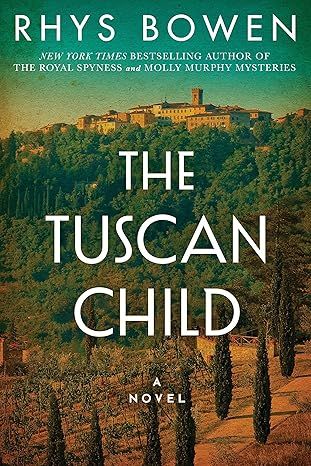
The Tuscan Child
4.2
-
100,022
$8.39
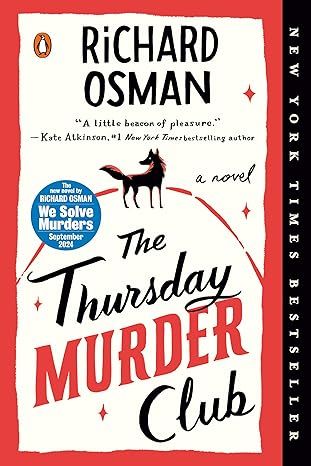
The Thursday Murder Club: A Novel (A Thursday Murder Club Mystery)
4.3
-
155,575
$6.33
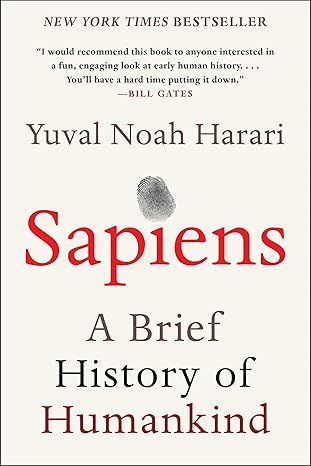
Sapiens: A Brief History of Humankind
4.6
-
140,302
$13.49
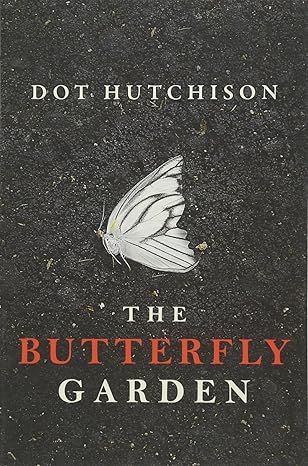
The Butterfly Garden (The Collector, 1)
4.3
-
88,556
$9.59
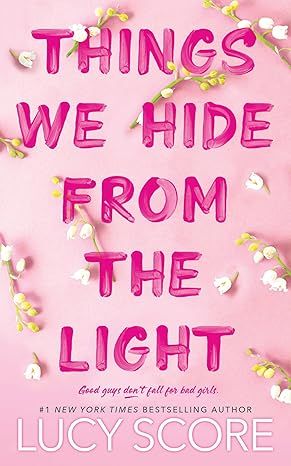
Things We Hide from the Light (Knockemout Series, 2)
4.4
-
94,890
$11.66
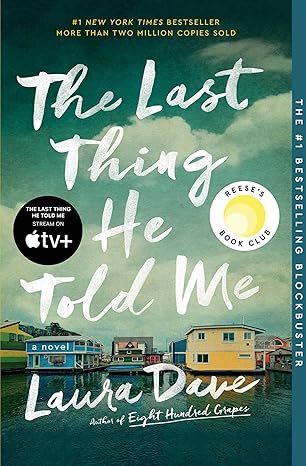
The Last Thing He Told Me: A Novel
4.3
-
154,085
$2.99

The Perfect Marriage: A Completely Gripping Psychological Suspense
4.3
-
143,196
$9.47
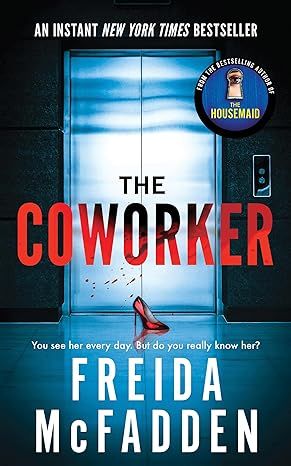
The Coworker
4.1
-
80,003
$13.48

First Lie Wins: A Novel (Random House Large Print)
4.3
-
54,062
$14.99

Mile High (Windy City Series Book 1)
4.4
-
59,745
$16.19

Layla
4.2
-
107,613
$8.99
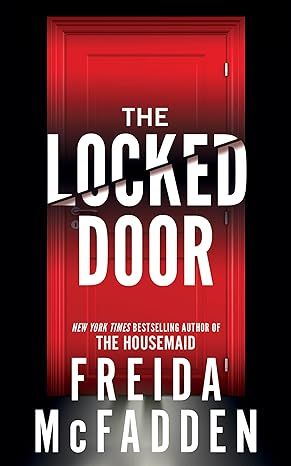
The Locked Door
4.4
-
94,673
$8.53


